|
|
|
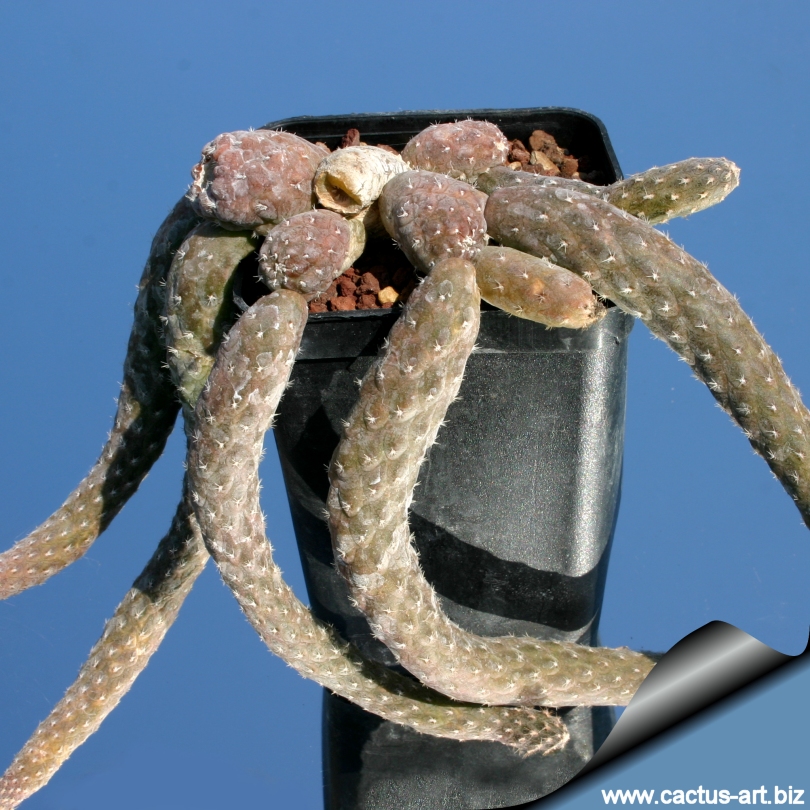
Pterocactus reticulatus
Note that the longer stems arise from the areoles of old flowers
calyx.
|
Description: Small
clumping plant with large undergroung tuberose root.
Stem: Formed by brown, olive green, greyish-purple or
whitish-grey segments. The side segment are (ususually) unbranched,
rather thick up to 2 cm in diameter, 2-3 cm long, globose to pear shaped
with a net-like (= reticulate) pattern of romboid tubercles.
Root: Tuberose up to 20 cm long.
Glochids: Very small.
Central spines: One (but usually absent) erect up to 5 mm long.
Radial spines: Very few (up to 6) or absent, pectinate, whitish
to brownish, 2 to 5 mm long.
Flower: Up to 5 cm in diameter. Pearl-white with a pale pink
tinge with a dark-red stigma. The flowers are at the tip of side
segments and hardly at the tip of the main segments like at P. megliolli.
Fruit: Borne laterally, often the bigger than the sterile
segments. Globose up to 2,5 cm in diameter.
|
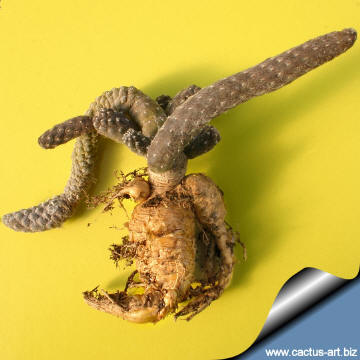 |
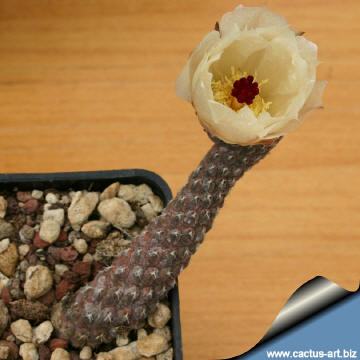 |
|
The
pearl-white with a pale pink tinge
flowers
forms
apically at the tip of lateral
stems.
|
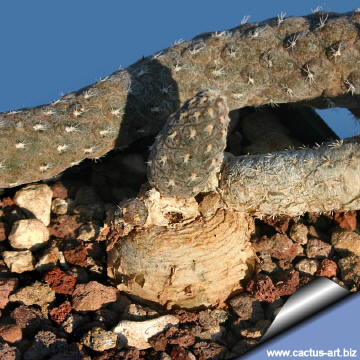 |
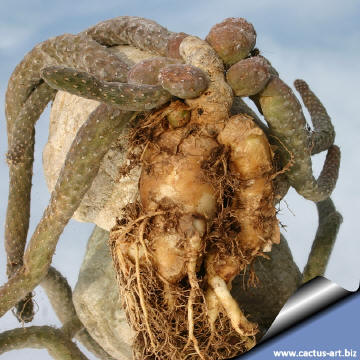 |
|
Advertising
|
|
|
|
|
Family:
Cactaceae (Cactus
Family)
Scientific name: Pterocactus
reticulatus Kiesling 1971
Subfamily: Opuntioideae
Origin:
Mendoza, San Juan -
Argentina (South America)
Conservation status: Listed in
CITES appendix 2.
|
|
|
|
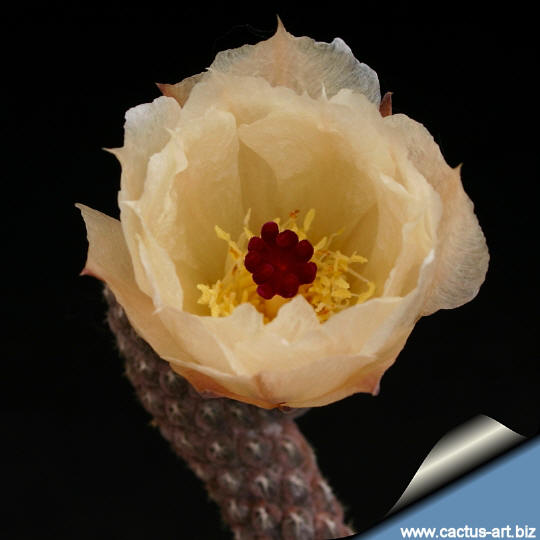
Dark-red stigmata are typical for this species.
|
|
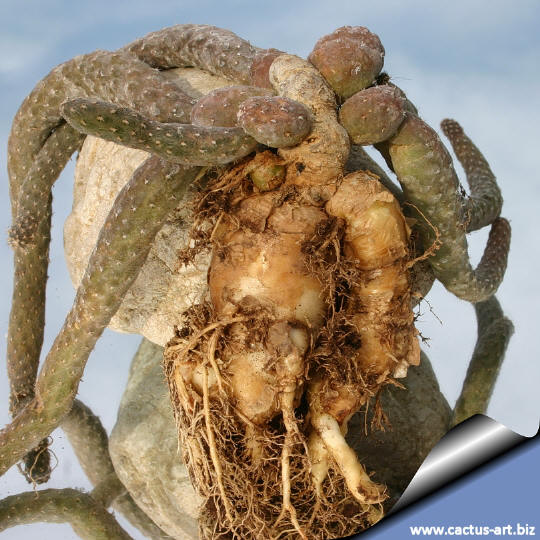
NOTE: Like for trees that lose
their leave in autumn the pterocati lose annually their aerial
part (segments) in a controlled way using a layer of bark to seal the
subterranean, living root-stock or keep their branches alive until harsh
conditions kill them, and then the grower throws the plants out, not
realizing that the root is still healthy. The best thing to do when
pterocati begin to dye back is to stop watering them and let them stay
dry and dormant. A few month later they will sent up a shoot on their
own. When that shoot appears, resume watering.
Cultivation:
Pterocacti are easy to grow, providing they are kept cold, but dry
during autumn and winter. It is essential to give full sun
otherwise they will become atypical. If grown in full sun, the new
growth will flower profusely in spring and summer.
Most of the slender stems become detached during winter but someone
advise to help plant pruning all the top growth in autumn to encourage
it to produce stems with terminal flowers in the spring.
Reproduction: Seeds/Cuttings.


|
|